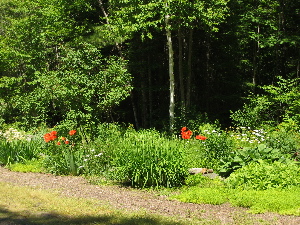ASTERS
Here it is, almost fall. Notice I said, "almost"! I'm having a tough time giving up summer this year. It blew by much too fast!
As we drive around our northern New Hampshire environment, we see wild asters everywhere. The wild kind we have are kind of a bluish-purple color. They liven up the areas that no longer sport daisys and goldenrod. Aside from the wild varieties, there are many cultivated asters in people's gardens that are much brighter, and of a much greater variety of colors. It doesn't matter though. There they are, and I love them!
Asters produce an abundance of delicate, daisy-like flowers in white, purple, lavender, pink or red. They are usually hardy in USDA zones 4 through 9, but check for your zone if you buy some.
Asters should be planted in moist, well-drained soil in full sun, but they will tolerate light shading. The plants form broad bushy clumps, so plant them at least 18 inches apart. They can be divided every 3 - 4 years in the early spring, or late fall after the flowering has finished. Pinch back the tops by 6-8 inches at least once during the late spring or very early summer, to create a bushier plant and to prolong the fall bloom. This pinching MUST be done prior to mid-July, or you'll snip off all the buds!
Asters may also be grown from seed sown directly into the garden soil after all danger of frost has passed. Germination takes anywhere from 15 to 30 days, depending on the temperature.





1 Comments:
My asters are just starting to bloom and I anticipate they will live up to their name of Michaelmas Daisies by being in full bloom on Sept. 29th, the feast of St. Michael. Then I'll forgive them for being somewhat unsightly the right of the year!
Post a Comment
<< Home